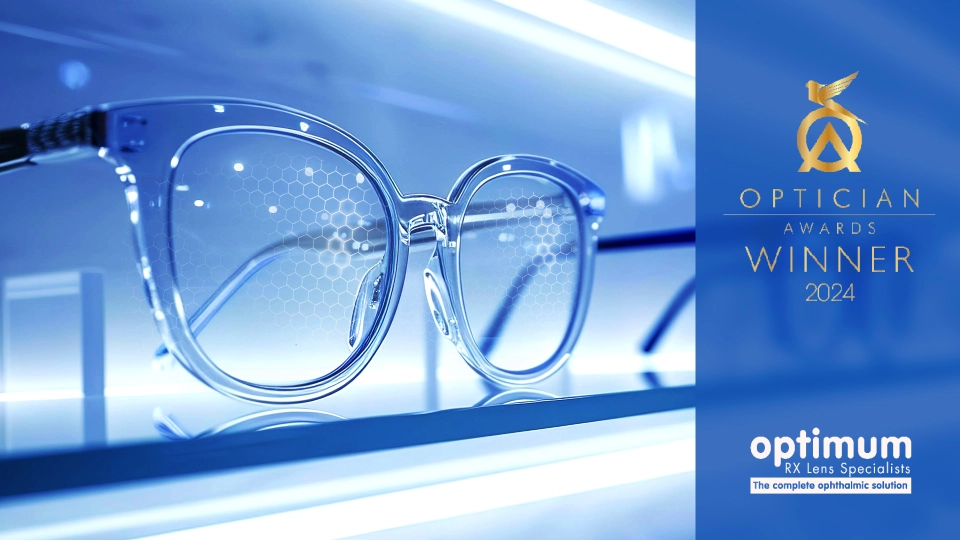
The Complete Guide to Bifocal Lenses
- What are bifocal lenses?
- Bifocal vs. trifocal vs. multifocal lenses
- Bifocal design characteristics
- Trifocal design characteristics
- Multifocal/progressive design characteristics
- Bifocal or progressive lens design?
- Types of bifocal lens designs
- 1. Flat-top (D-segment) & Curved-top (C-segment)
- 2. Round segment design
- 3. Executive (E-style) design
- What makes a good bifocal lens
- Precision in segmentation
- Material quality
- Coatings and treatments
- Comfort and fit
- Manufacturing challenges and solutions
- 1. Segment integration
- 2. Surface quality
- 3. Power accuracy
- Enhance your lab’s portfolio with IOT bifocal lenses

The Complete Guide to Bifocal Lenses
Bifocal lenses revolutionized vision correction when Benjamin Franklin reportedly created the first pair in the 18th century. As he aged, he became both near-sighted and far-sighted but grew tired of switching between glasses. Instead, he took the lenses from both pairs, sliced them in half, and re-installed them in the same frame, creating what Franklin called “double spectacles.”
Today, bifocals remain an essential tool for treating presbyopia, a common condition caused by age. While they may seem old-fashioned compared to progressive lenses, bifocals are far from obsolete. Technological advancements in lens manufacturing and design have made them more effective and customizable than ever before.
What are bifocal lenses?
Bifocal lenses combine two optical powers in a single lens: one for distance vision and another most typically used for near vision. Manufacturers refer to this visible demarcation as a segment line or optical discontinuity.
Eye care professionals primarily prescribe bifocals for presbyopia while also addressing other refractive errors such as myopia, hyperopia, or astigmatism. The upper portion of the lens typically corrects distance vision, while the lower segment (known as the near-vision add) corrects near vision. Bifocals eliminate the need to switch between multiple pairs of glasses, making them a practical solution for early presbyopes and presbyopic patients requiring lower add powers.
Key features of bifocal lenses:
- Segment Shape: Depending on the patient's visual needs and preferences, the near-vision segments are commonly round, flat-top (D-segment), and executive (full-width).
- Measurements: Segment widths typically range from 15mm to 25mm, and add powers are available from +0.75D to +3.50D. Cylinder corrections can generally be up to -6.00D.
- Customization: Modern freeform manufacturing processes allow for customizable bifocals with precise segment positioning, aberration control, add power, and coatings such as UV light and blue light filters.

Bifocal vs. trifocal vs. multifocal lenses
Bifocal lens technology paved the way for additional advancements, propelling lens designs forward. Building upon the foundation created by bifocals, manufacturers began incorporating more powers into a single lens.
Bifocal design characteristics
- Two distinct focal points
- Clearly defined segment boundaries
- Instantaneous power change at segment line
- No specific intermediate vision correction
Trifocal design characteristics
- Three distinct power zones
- Two visible segment lines
- Dedicated intermediate zone
- More complex manufacturing process
- Limited availability in modern lens supply
Multifocal/progressive design characteristics
- Continuous power progression with a seamless transition
- No visible segment lines
- Variable corridor lengths
- Complex surface mathematics
Bifocal or progressive lens design?
The choice between bifocals and progressives depends on the patient’s lifestyle, preferences, and vision requirements. Bifocals also provide technical advantages, like sharp near and distance vision without distortion in the visual zones. However, they lack the seamless transitions of progressives and can feel limiting for patients needing intermediate correction. The aesthetic is also a drawback for some, as the visible line between segments is a traditional design, seen as cosmetically outdated by younger generations. The segment line can also cause a stark image jump, which breaks the natural field of vision.
Progressive lenses often have a longer adaption period. Some patients prefer the traditional bifocal style they’ve been wearing instead of retraining their eyes to adjust to a new lens type. However, if a patient can work through the adaption period, many wearers report greater eye comfort overall.
Features of bifocals
- Wider reading area
- Cost-effective compared to progressives
- Minimal peripheral distortion
- Reduced adaptation period
- Better contrast sensitivity in power zones
- Straightforward production process
- Easier quality control verification
Features of progressives
- Continuous vision correction and a natural power transition
- No image jump
- Enhanced intermediate vision zone
- Greater design customization options
- Superior aesthetic appeal with no visible lines
- Flexible power distribution control

Types of bifocal lens designs
Modern manufacturing capabilities have allowed for more flexibility and design choices in bifocal lenses. Today, bifocal lenses come in various designs to accommodate visual needs and preferences.
1. Flat-top (D-segment) & Curved-top (C-segment)
One of the most common bifocal designs, the flat-top, offers a wide near-vision zone, making it well-suited for reading-intensive tasks. Some manufacturers may refer to this as an S segment for straight top, which is another term for the D-segment, referring to the same design. This design reduce image jump in minus prescriptions. C-segment is a variation of D-segment, but with a curved top. This design reduces image jump and reflections off the segment, leading to better aesthetics and improved optics.
2. Round segment design
The near-vision zone is circular in a round segment design, offering smoother transitions between zones. The lenses have a less pronounced line, which many wearers associate with a higher aesthetic appeal. These designs also have a reduced image jump for plus powers, though they have limited availability in high powers.
3. Executive (E-style) design
These lenses have a full-width near-vision segment, which makes them ideal for patients requiring expansive near-vision correction. This often blends over to wearers looking for lenses for occupational use.
What makes a good bifocal lens
Manufacturing high-quality bifocal lenses requires precise control over several critical parameters:
Precision in segmentation
Proper placement of the near-vision segment is crucial for visual comfort. A poorly positioned segment can lead to neck strain as patients adjust their posture to view through it when performing the required activity, like reading.
Material quality
To yield the best benefits, ensure the material choice aligns with the patient's needs. For example, glass has excellent clarity but is less impact-resistant and heavy. CR-39 is lightweight but still not very durable, whereas polycarbonate and trivex are comparably more impact-resistant and lightweight.
Coatings and treatments
Coatings and treatments enhance bifocal lenses' performance, durability, and usability, addressing common concerns like glare, scratches, and UV exposure. Anti-reflective (AR) coatings improve light transmission, making lenses ideal for night driving and screen use. Scratch-resistant coatings extend the lifespan of lenses by protecting against wear and tear. Photochromic treatments allow bifocal lenses to adapt to changing light conditions, while blue light filters have become a popular choice for patients who spend extended hours in front of digital screens.
Comfort and fit
A well-designed bifocal lens aligns with the patient’s pupillary distance and visual habits. Proper fitting ensures minimal eye strain and optimal performance. Improperly fitted lenses can cause neck strain, headaches, or eye fatigue as patients adjust their posture to compensate for poor placement.
Manufacturing challenges and solutions
Though manufacturers have been making bifocal lenses for a while, several challenges come with their production.
1. Segment integration
Bifocal lenses must have precise segment alignment to function correctly. Most manufacturers use advanced quality control imaging systems and precision temperature control to address this complexity.
2. Surface quality
Conventional bifocals come with the segment and add power segment already on the blank lens. Then design is limited by what can be done from this starting point. Freeform manufacturing allows for more flexibility in general, but with bifocals, it is challenging to create precise optical performance across different viewing zones while maintaining optical clarity in each viewing zone. Most manufacturers combat this using surface topology mapping, real-time error correction, and regularly calibrating digital surfacing machines to minimize errors.
3. Power accuracy
Bifocal lenses require two distinct power zones—distance and near. Small inaccuracies in the curvature or thickness can cause significant deviations in optical performance. Different materials also react differently to grinding, polishing, and molding, affecting lens power. Manufacturers must adopt processes specific to each material, like optimizing cutting speeds for softer materials like polycarbonate. Relying on advanced measurement systems can also reduce human error.
Enhance your lab’s portfolio with IOT bifocal lenses
IOT’s Endless Bifocal lenses combine precision engineering with advanced materials to deliver superior optical performance and comfort. With customizable segment designs, cutting-edge coatings, and exceptional durability, our lenses cater to a wide range of patient needs.
Contact us today if you’re ready to elevate your lab’s offerings with high-quality bifocal lenses. Our team is here to provide personalized solutions and answer any questions you may have.






